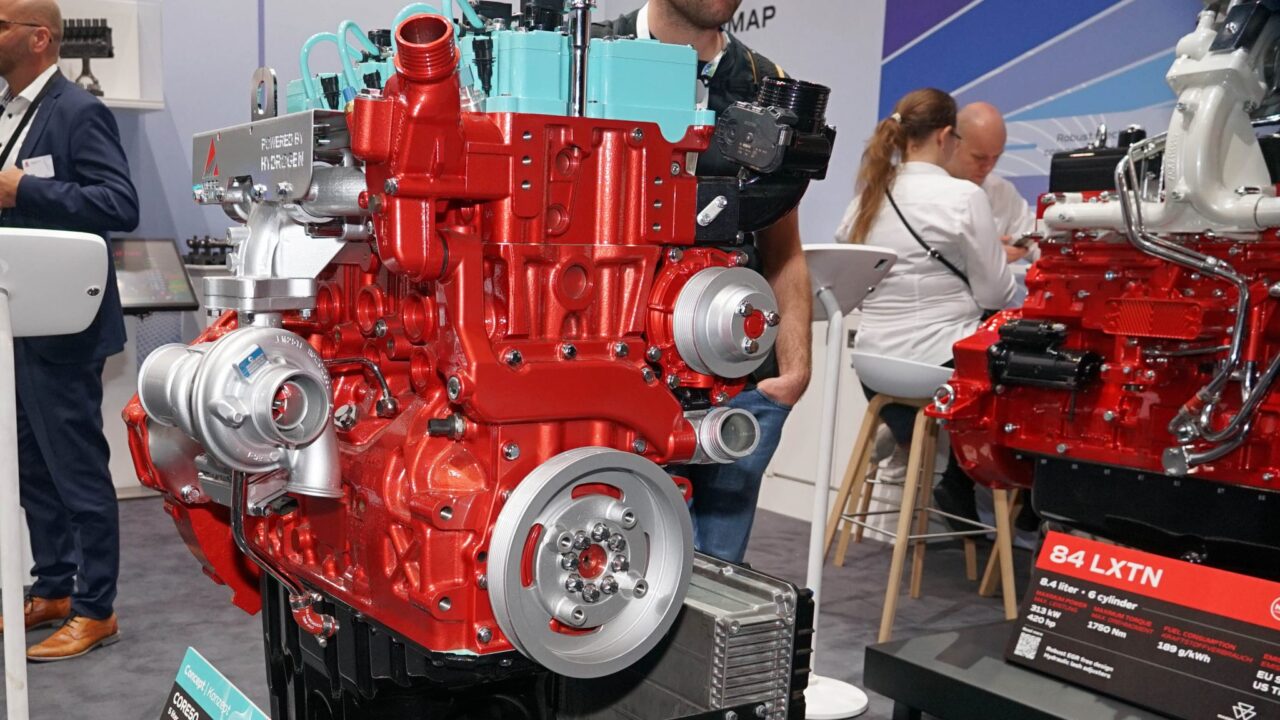The internal combustion engine will be with us for a good while yet, according to Heikki Hihnala of AGCO Power, the engine production division of the AGCO corporation.
However, he said what may change is what we will be burning inside the engines, and that is the open question that AGCO Power seeks to address with its latest CORE series engines.
These are a part of a billion dollar investment that not only saw the development of engines designed to run on a variety of fuels but also the creation of a factory at Linnavuori in Finland to build the engines.
Liquids will dominate
Diesel, or at least a liquid-based carbon fuel, is the way forward, Hihnala believes.
Even though there was a hydrogen-burning version of the engine on AGCO Power’s stand at Agritechnica, Hihnala noted that hydrogen requires eight times the storage capacity of diesel because of the tanks, valves, and pipework associated with the gas.
Being the smallest molecule, hydrogen is also the most difficult to contain at high pressures, which significantly adds to the cost of storing it.
Batteries have a place
Despite this enthusiasm for the internal combustion engine, AGCO Power are also developing a battery power pack designed specifically for electric tractors

There are two main criteria to be considered in designing this battery: safety in extreme operating conditions; and packaging within the physical constraints of a tractor.
The company is developing this scalable power pack to drive smaller tractors but it notes that a tractor cannot be designed to a battery’s dictates.
Form as important as function
Space is constrained by factors that cannot be changed. For example, room is needed for a loader at the front while at the rear sits a three point linkage with standardised mounting points for implements.
Given the large number of battery powered tractors on display at Agritechnica, it is certain that they will have a role in certain situations.
Yet few suggest that these tractors will cope with heavy field work, and even less have a firm idea of what can be done with them at the end of their lives.

